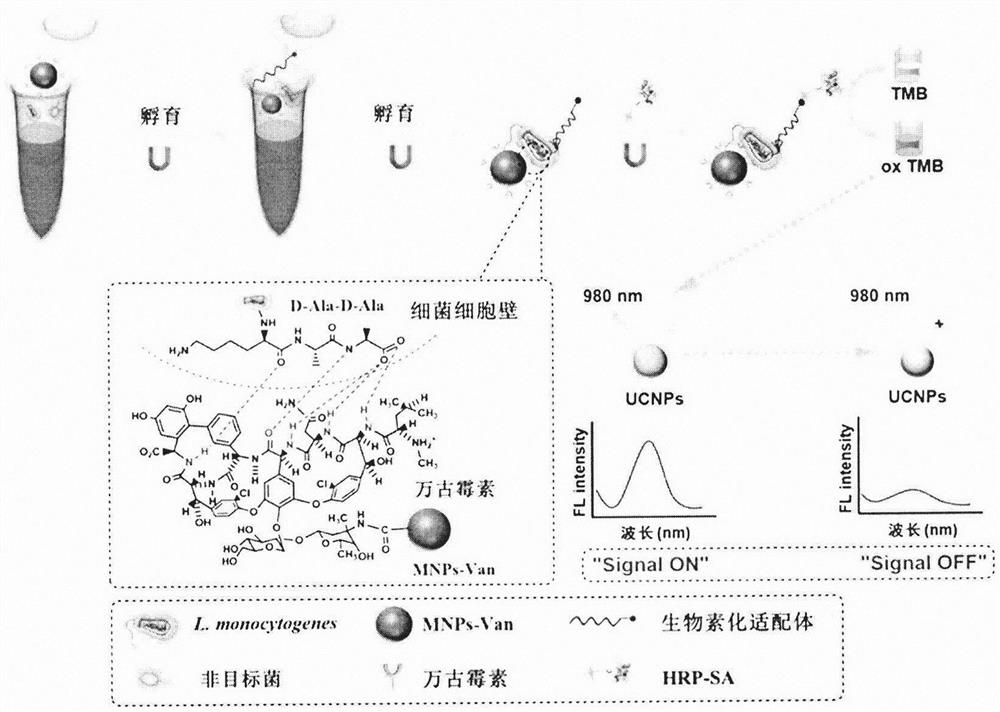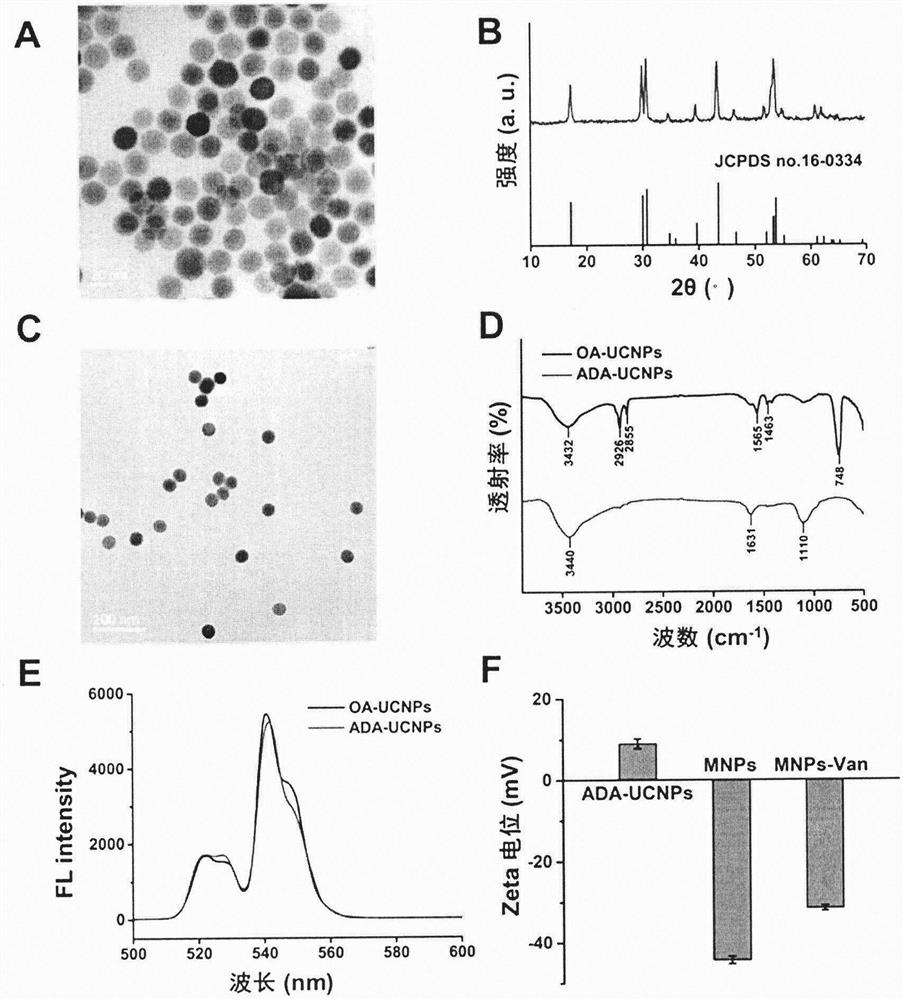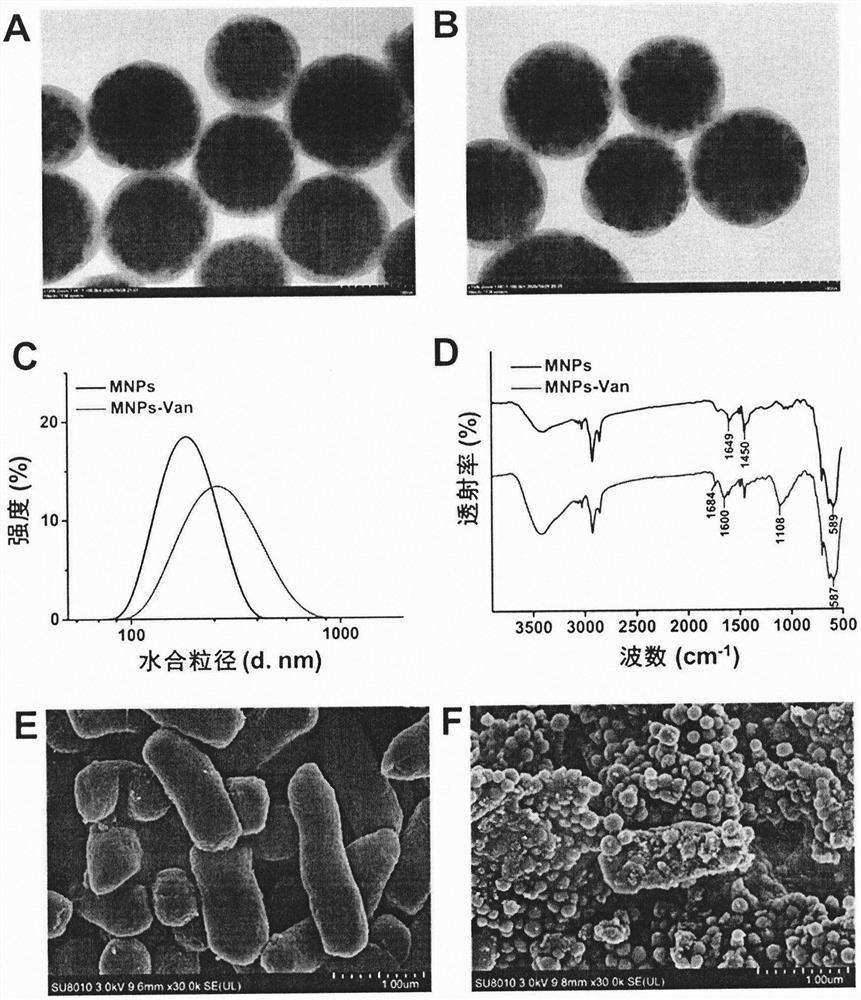Construction method of fluorescent biosensor for rapid detection of Listeria monocytogenes
A biosensor and sensor technology, applied in fluorescence/phosphorescence, instruments, measuring devices, etc., can solve the problems of easy false positive results, high design requirements, complicated operation, etc., and achieve easy on-site instant detection and strong anti-interference ability , to overcome the effect of low sensitivity
- Summary
- Abstract
- Description
- Claims
- Application Information
AI Technical Summary
Problems solved by technology
Method used
Image
Examples
Embodiment 1
[0020] 1. Fabrication of Fluorescent Biosensors
[0021] (1) Preparation of UCNPs
[0022] 1) Weigh 0.1164g YCl respectively 3 ·6H 2 O, 0.0892g GdCl 3 ·6H 2 O, 0.062g YbCl 3 ·6H 2 O and 0.006g ErCl 3 ·6H 2 O was dissolved in 4mL of methanol solution, sonicated until completely dissolved, and then poured into a three-necked flask rinsed with a little methanol (the three-necked flask must be kept clean, if necessary, it can be soaked overnight in aqua regia); then poured into 6mL of oleic acid and 14 mL of 1-octadecene.
[0023] 2) Under continuous magnetic stirring, the above mixture was placed under nitrogen protection condition, heated to 160°C, kept for 30min, and then cooled to about 50°C.
[0024] 3) Weigh 0.2964g NH respectively 4 F and 0.2g NaOH were dissolved in 20mL methanol solution, and ultrasonicated for about 15min until completely dissolved; then, under continuous stirring, the solution was added dropwise to the above flask solution. The mixture was the...
PUM
 Login to View More
Login to View More Abstract
Description
Claims
Application Information
 Login to View More
Login to View More - R&D
- Intellectual Property
- Life Sciences
- Materials
- Tech Scout
- Unparalleled Data Quality
- Higher Quality Content
- 60% Fewer Hallucinations
Browse by: Latest US Patents, China's latest patents, Technical Efficacy Thesaurus, Application Domain, Technology Topic, Popular Technical Reports.
© 2025 PatSnap. All rights reserved.Legal|Privacy policy|Modern Slavery Act Transparency Statement|Sitemap|About US| Contact US: help@patsnap.com



